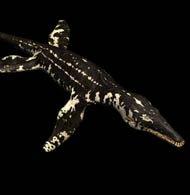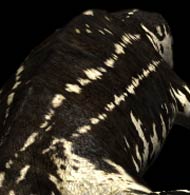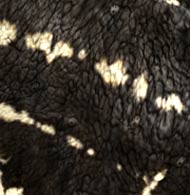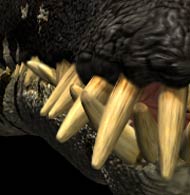
At almost 25 m long Liopleurodon was the biggest carnivore that ever existed. It had four large paddle-shaped limbs, which made it a powerful swimmer.
With an enormous 3 metre long mouth which contained teeth twice as long as those of Tyrannosaurus, it was a formidable predator. Its teeth were arranged in a distinctive rosette at the end of its snout. The remains of Liopleurodon attacks are preserved in the fossil record. Half-eaten ichthyosaurs and teeth marks in plesiosaur flippers are clear evidence of their voracious appetites.
Recent studies on the skull of Liopleurodon have shown that it could sample the water in stereo through its nostrils. This allowed it to tell where certain smells came from. If it swam along with its mouth open, water would pass straight up into scoop-shaped nostril openings in the roof of it's mouth, before passing out through the nasal openings in front of the eyes.
Liopleurodon fossils are relatively common and well preserved in several marine deposits throughout Europe. It was a type of pliosaur, or short-necked plesiosaur. Pliosaurs are a group of plesiosaurs, one of a type of reptiles that returned to the sea. Plesiosaurs appeared in the Early Jurassic period and rapidly split into two major groups: long-necked forms like Cryptoclidus, and short-necked forms, or pliosaurs like Liopleurodon.



